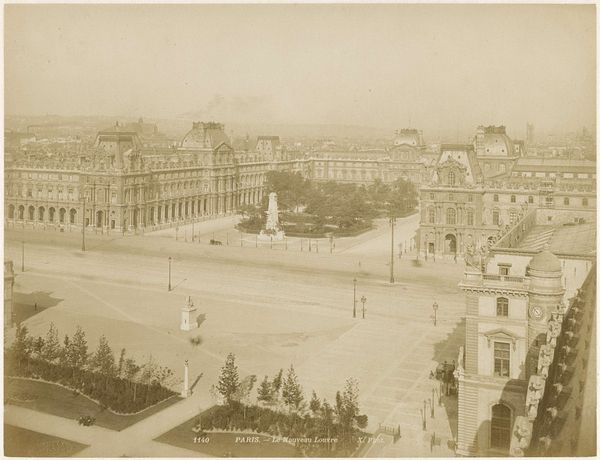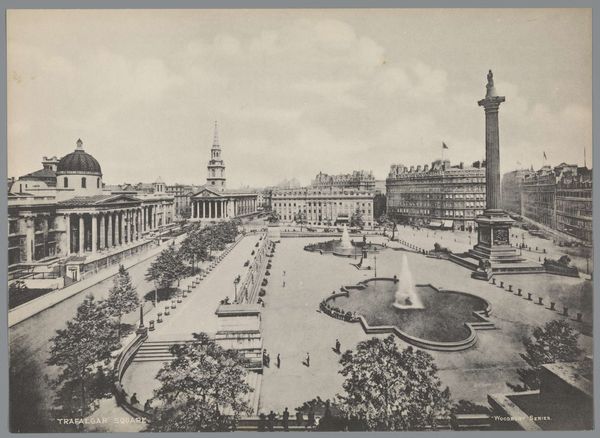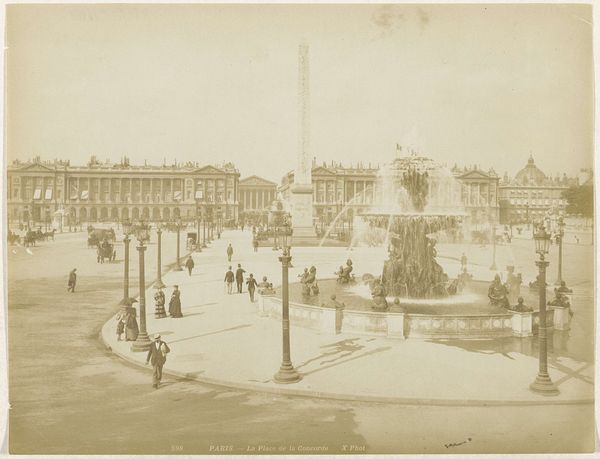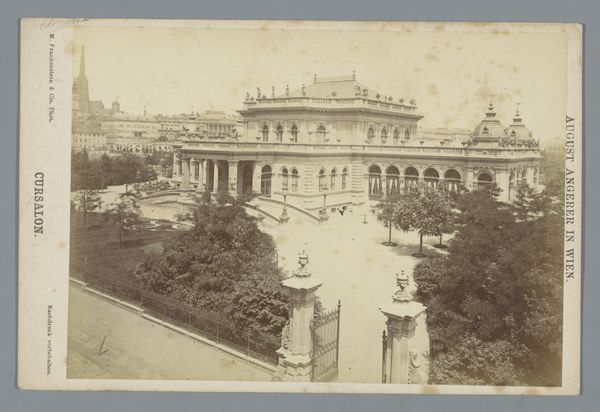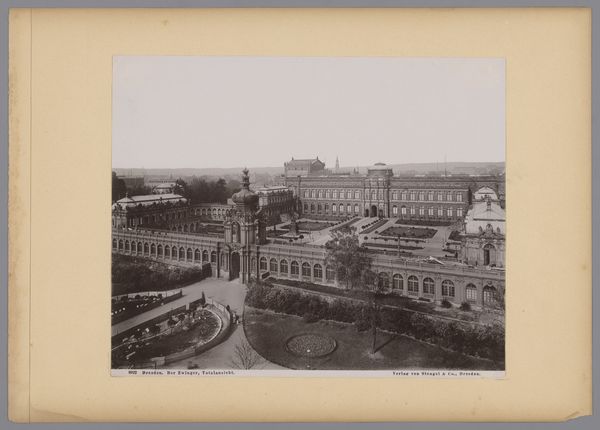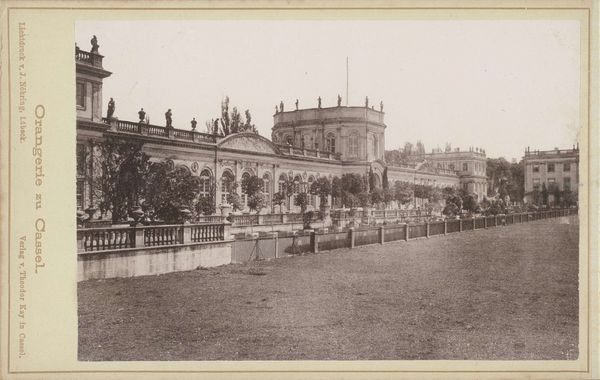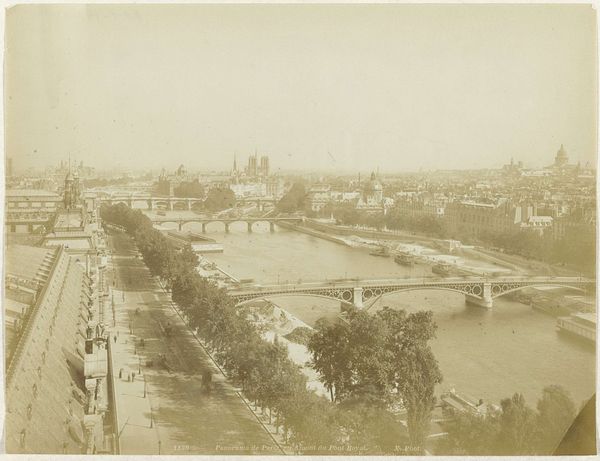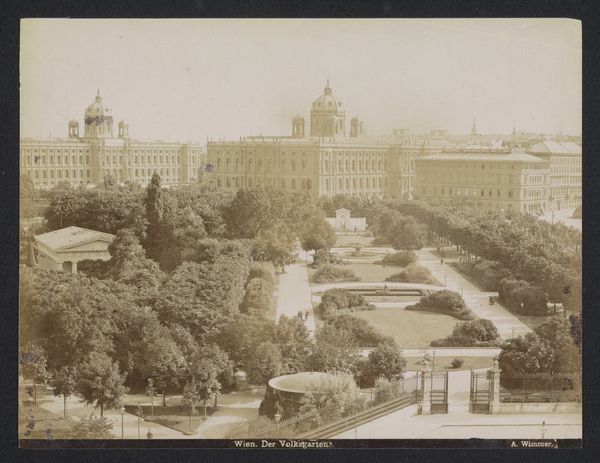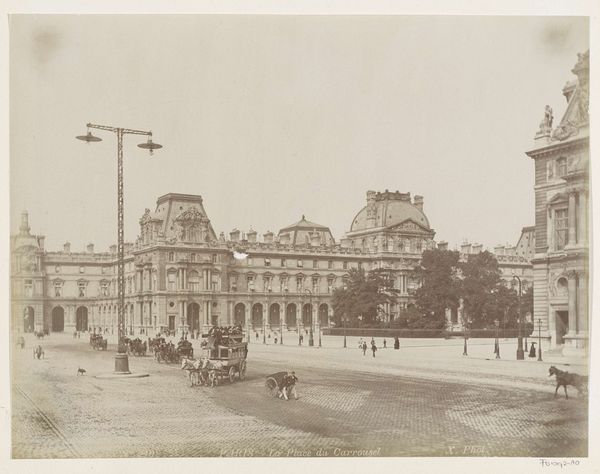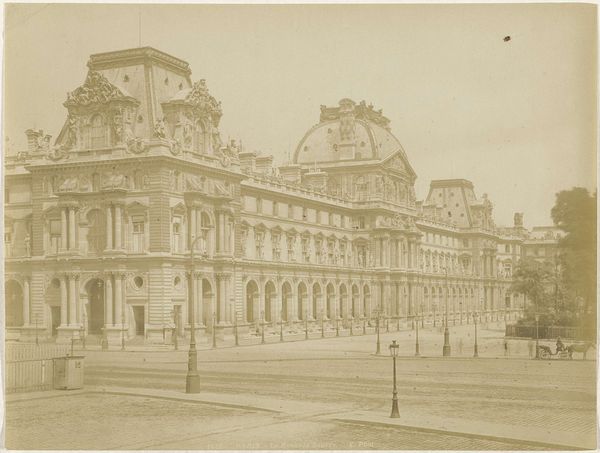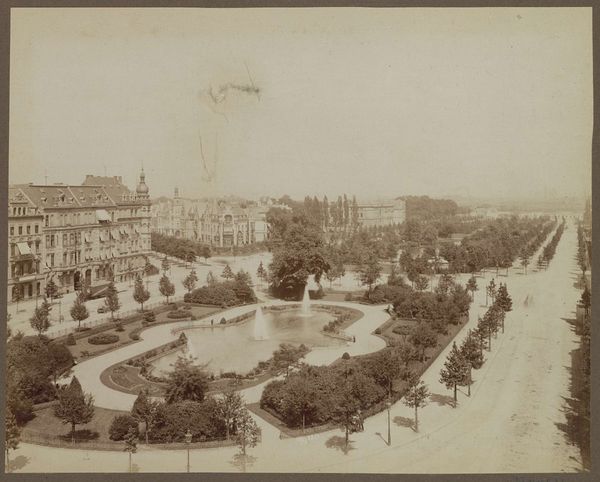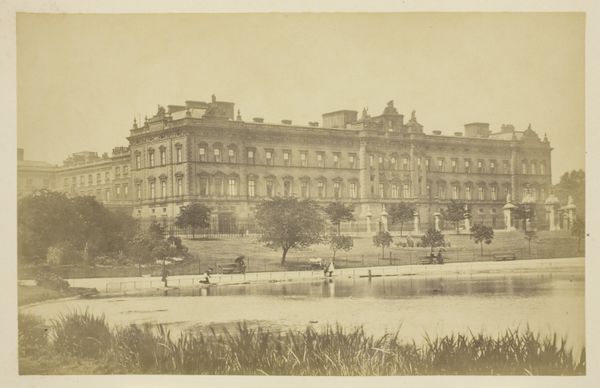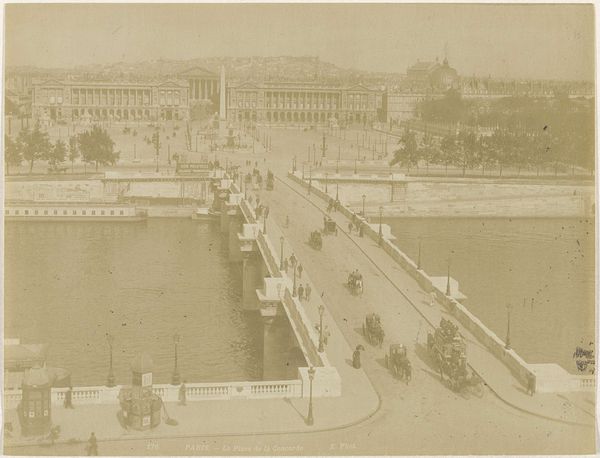
Gezicht op het Place du Caroussel vanuit het Louvre in Parijs, op de achtergrond de Tuilerieën 1887 - 1900
0:00
0:00
photography
#
excavation photography
#
outdoor environmental image
#
photo restoration
#
pictorialism
#
landscape
#
outdoor photograph
#
outdoor photography
#
photography
#
outdoor scenery
#
scenic photography
#
outdoor activity
#
cityscape
#
scenic spot
#
shadow overcast
Dimensions: height 205 mm, width 273 mm
Copyright: Rijks Museum: Open Domain
Curator: Let's turn our attention to "Gezicht op het Place du Caroussel vanuit het Louvre in Parijs, op de achtergrond de Tuilerieën," a photograph captured sometime between 1887 and 1900. The photographer is identified as X. Phot. Editor: Immediately, I'm struck by the formality. The photograph creates distance, it is as if we are seeing Paris from a privileged position, elevated and separated from the street. Curator: That's a fascinating take, the position definitely frames the viewpoint. I think the composition shows an embrace of Japonisme's aesthetic. The placement and angle capture an ephemeral feeling similar to Japanese prints which made their way into Europe at the time. Editor: Interesting, because for me the neutral sepia tone, paired with the rigid geometry of Parisian architecture evokes an image of authority, and recalls France’s imperial power. Haussmann's redesign of Paris, completed just a few decades prior, was an imposition of order onto the chaotic urban landscape, displacing communities and reinforcing social hierarchies. Curator: I do see the imposing feel. The angle may be less about imposing a "sense of order", but rather more a depiction of life from the high rises beginning to show up during the late 19th century. To me it expresses more modern anxieties or a commentary on the flâneur experience, that detachment when wandering through a busy cityscape. Editor: I suppose this detachment, and new visual experience could offer insight into urban life... who was allowed to gaze from this elevated position and whose experiences were rendered invisible. Curator: The play of light is beautiful, though. Even with what looks like an overcast day, the architectural detail is prominent, almost creating a secondary symbolic perspective of the rising social structures and class. Editor: And there is a historical truth in the material reality and social relations of Paris in the late 19th century. Curator: Exactly, in short, both of these concepts can coincide, existing not as contradictions, but simply a play on symbols over time. Editor: Perhaps our modern anxieties about historical erasures have shifted our perspectives of what power used to mean.
Comments
No comments
Be the first to comment and join the conversation on the ultimate creative platform.
